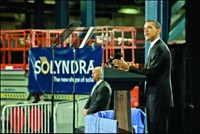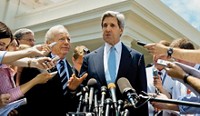Advertisement
Grab your lab coat. Let's get started
Welcome!
Welcome!
Create an account below to get 6 C&EN articles per month, receive newsletters and more - all free.
It seems this is your first time logging in online. Please enter the following information to continue.
As an ACS member you automatically get access to this site. All we need is few more details to create your reading experience.
Not you? Sign in with a different account.
Not you? Sign in with a different account.
ERROR 1
ERROR 1
ERROR 2
ERROR 2
ERROR 2
ERROR 2
ERROR 2
Password and Confirm password must match.
If you have an ACS member number, please enter it here so we can link this account to your membership. (optional)
ERROR 2
ACS values your privacy. By submitting your information, you are gaining access to C&EN and subscribing to our weekly newsletter. We use the information you provide to make your reading experience better, and we will never sell your data to third party members.
Environment
Climate-Change Bills Remain Vague
by Cheryl Hogue and Jeff Johnson
March 30, 2009
| A version of this story appeared in
Volume 87, Issue 13
Congress has been busy hashing out ideas to cut U.S. greenhouse gas (GHG) emissions. In recent weeks, House and Senate committees have held more than a dozen hearings probing ways to curb emissions without drastically affecting the U.S. economy. Some House members, for instance, are seeking special breaks for manufacturers of basic chemicals and other energy-intensive materials as part of any emission-cutting proposal.
Lawmakers are still pondering details, and so far this year, no climate-change bill has been introduced that enjoys support from key legislators. What is clear, however, is that any bill passed by the House or Senate is almost certain to include an emission cap-and-trade scheme, rather than a tax on releases of carbon dioxide and other GHGs.
Rep. Henry A. Waxman (D-Calif.), chairman of the House Energy & Commerce Committee, has set a goal for his panel of approving a cap-and-trade bill by Memorial Day. Once introduced, that legislation will be taken up by the Energy & Commerce Subcommittee on Energy & Environment, chaired by Rep. Edward J. Markey (D-Mass.), a strong cap-and-trade advocate.
In the Senate, plans are much less clear. Sen. Barbara Boxer (D-Calif.), who chairs the Environment & Public Works Committee, is a staunch backer of a cap-and-trade approach, and her panel is key to passage of a climate-change bill. But Boxer says she has "a very fluid strategy" for climate legislation and has announced no deadline for action. The Senate may wait to act until after the House passes a cap-and-trade bill.
Meanwhile, President Barack Obama laid out ideas for a cap-and-trade system as part of his $3.6 trillion 2010 spending plan. His goal is to cut GHG emissions 14% below 2005 levels by 2020 and about 83% below 2005 levels by 2050. There would be no free emission allowances under this plan. Instead, all would be auctioned off, raising some $79 billion in revenues annually starting in 2012. About $15 billion of these revenues would be used to fund clean-energy projects; the rest would aid families and businesses hurt by increased energy costs.
Under an all-auction scheme, companies that could not make their assigned reductions would have to buy allowances to comply with a declining emissions cap. However, a few members of Congress want to provide at least some free allowances to industries that might find it cheaper to shutter U.S. plants and move their operations to the developing world than to buy allowances.
Basic chemicals manufacturing is one of six energy-intensive industries that Markey has singled out as the most vulnerable to overseas competition if the U.S. cuts its GHG emissions. The others are iron and steel, paper and pulp, aluminum, cement, and glass. To aid these industries, lawmakers are considering proposals that range from free allowances to imposition of a stiff tariff on goods such as basic chemicals that are made in countries with unfettered GHG emissions.




Join the conversation
Contact the reporter
Submit a Letter to the Editor for publication
Engage with us on Twitter